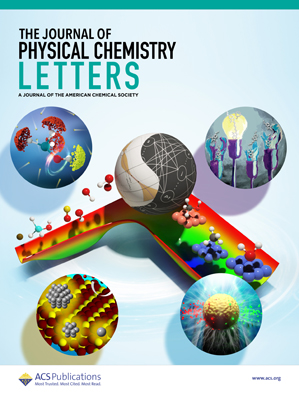Electroosmotic Flow-Driven DNA–CNT Nanomotor via Tunable Surface-Charged Nanopore Array
IF 4.6
2区 化学
Q2 CHEMISTRY, PHYSICAL
引用次数: 0
Abstract
Nanomotors are usually designed to work in liquid media and carry cargo; they exhibit excellent potential for biosensing and disease treatment applications due to their small size. Graphene and carbon nanotubes (CNTs) are crucial components of rotary nanomotors because of excellent mechanical properties and adaptability to the human body. Herein, we introduce a DNA–CNT-based nanomotor that achieves its rotational control through an array of nanopores with tunable surface charges. The findings demonstrate that by adjusting the surface charge density of the nanopores and the direction of electric field, a DNA strand can be sequentially captured by the nanopores, thereby rotating the connected CNT. The transition from a four-nanopore array to a six-nanopore array reveals that reducing the step angle to 60° significantly enhances the rotational stability of the nanomotor and reduces random fluctuations caused by Brownian motion. This method improves the control stability of the nanomotor, providing robust support for future applications in nanoscale manipulation.

通过可调表面充电纳米孔阵列实现电渗流驱动的 DNA-CNT 纳米马达
纳米电机通常设计用于在液体介质中工作和运载货物;由于体积小,它们在生物传感和疾病治疗应用方面具有极佳的潜力。石墨烯和碳纳米管(CNT)具有优异的机械性能和人体适应性,是旋转纳米马达的重要组成部分。在这里,我们介绍了一种基于 DNA-CNT 的纳米马达,它通过表面电荷可调的纳米孔阵列实现旋转控制。研究结果表明,通过调整纳米孔的表面电荷密度和电场方向,DNA 链可以依次被纳米孔捕获,从而使连接的 CNT 旋转。从四纳米孔阵列过渡到六纳米孔阵列的结果表明,将阶跃角减小到 60° 能显著增强纳米马达的旋转稳定性,并减少布朗运动引起的随机波动。这种方法提高了纳米电机的控制稳定性,为未来在纳米级操纵领域的应用提供了强有力的支持。
本文章由计算机程序翻译,如有差异,请以英文原文为准。
求助全文
约1分钟内获得全文
求助全文
来源期刊

The Journal of Physical Chemistry Letters
CHEMISTRY, PHYSICAL-NANOSCIENCE & NANOTECHNOLOGY
CiteScore
9.60
自引率
7.00%
发文量
1519
审稿时长
1.6 months
期刊介绍:
The Journal of Physical Chemistry (JPC) Letters is devoted to reporting new and original experimental and theoretical basic research of interest to physical chemists, biophysical chemists, chemical physicists, physicists, material scientists, and engineers. An important criterion for acceptance is that the paper reports a significant scientific advance and/or physical insight such that rapid publication is essential. Two issues of JPC Letters are published each month.
 求助内容:
求助内容: 应助结果提醒方式:
应助结果提醒方式:


